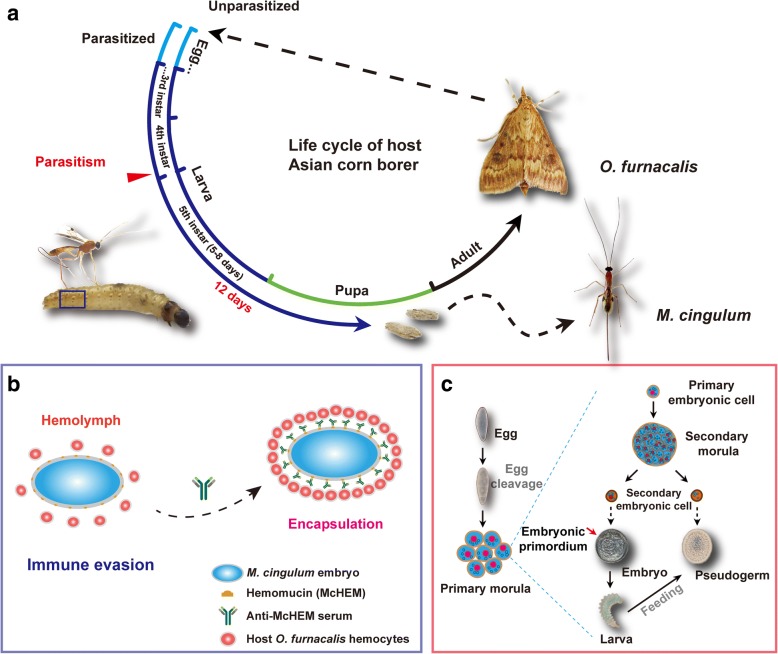Fig. 1.
The life cycle and living strategies of M. cingulum. a The wasp M. cingulum parasitizes the larvae of Asian corn borer Ostrinia furnacalis at late stage of the 4th instar. The wasp develops in host hemocoel and grows into adult 12 days later. After parasitism, the host expands their larval stage from 5 to 8 days to 12–13 days, and never pupates. Eventually, the wasp larvae creep out of the corpse of host and cocoon on it, which has been consumed by wasp larvae. b The wasp M. cingulum evades the encapsulation of host hemocytes by Hemomucin. The immune evasion of M. cingulum is related to the O-glycosylation of the transmembrane protein Hemomucin located on the surface of egg and embryos. c The polyembryonic development of M. cingulum. One egg of M. cingulum can proliferate into multiple genetically identical offspring. The wasp egg firstly cleaves into dozens of primary embryonic cells, which split within the extraembryonic membrane and grows into morulae containing dozens of secondary embryonic cells, which differentiated into two castes: embryo and pseudogerm. Embryo is composed of embryonic primordium and syncytial extraembryonic membrane, and eventually develops into wasp larva. Pseudogerm is syncytium and is eaten by the wasp larva at the late stage as compensatory nutrition

